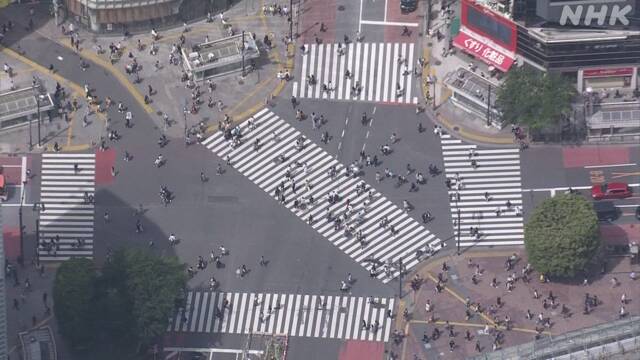The number of people on the 4th of Tokyo, Osaka, Hyogo, and Kyoto, where the third state of emergency was declared, decreased at some points compared to the time of the second declaration, but compared to the time of the first declaration last year. And both have increased significantly.
NHK has issued a third state of emergency in Tokyo, where the IT-related company "Agoop" has issued a third state of emergency using mobile phone location information data collected in a form that does not identify individuals with the permission of the user. We analyzed the number of people in major locations in Osaka, Hyogo, and Kyoto.
The time analyzed is from 6 am to 6 pm during the day and from 6 pm to midnight the next day at night.
There are also points and time zones that have decreased compared to the time of the second declaration
According to this, the number of people on the 4th decreased by 10% during the daytime near Tokyo Station but increased by 8% at night compared to the average of Saturdays, Sundays, and holidays during the period when the second declaration was issued.
The area near the Shibuya Scramble crossing decreased by 17% during the day but increased by 25% at night.
On the other hand, 58% in the daytime and 51% in the nighttime near Osaka Umeda Station, 30% in the daytime and 11% in the nighttime near Sannomiya Station in Kobe City, 25% in the daytime and 22% in the nighttime near Kyoto Station. , Both have decreased.
Compared to the time of the first declaration, there is a significant increase in each region
Compared to the average of Saturdays, Sundays, and holidays during the period when the first declaration was issued last year, all points have increased significantly. The rate of increase in each region is as follows.
▽ Near Tokyo Station: 167% (about 2.7 times) during the day 209% (about 3.1 times) at night
▽ Near Shibuya Scramble Crossing: 138% (about 2.4 times) during the day and 303% (about 4 times) at night
▽ Near Osaka Umeda Station: 179% (about 2.8 times) during the day and 212% (about 3.1 times) at night
▽ Near Sannomiya Station: 186% (about 2.9 times) during the day and 279% (about 3.8 times) at night
▽ Kyoto Near the station: 209% (about 3.1 times) during the day and 224% (about 3.2 times) at night

